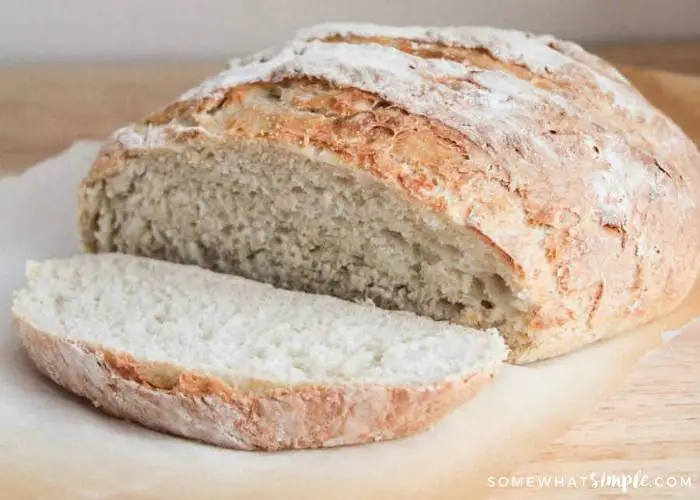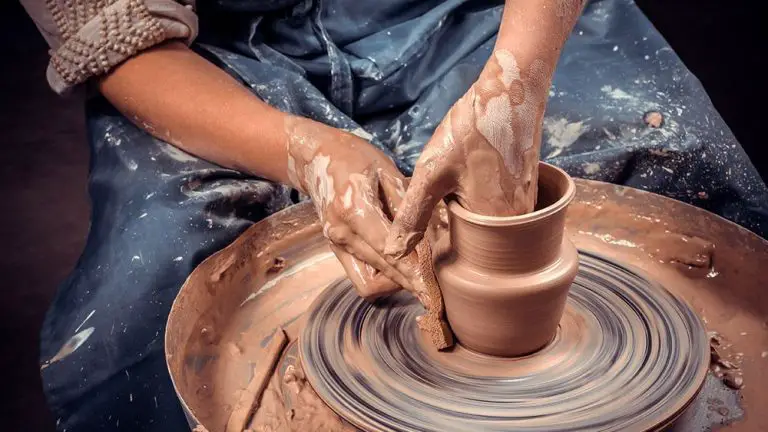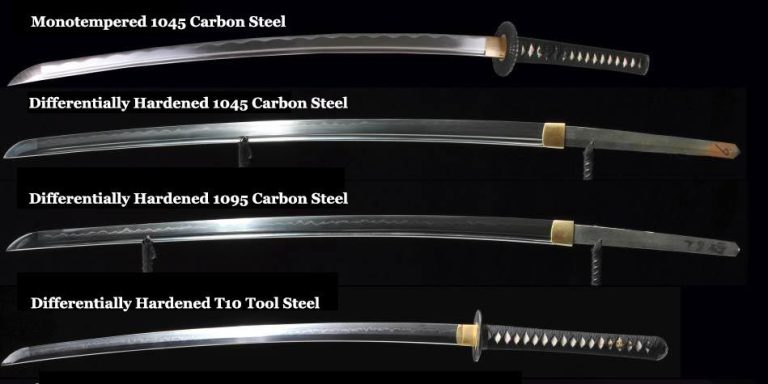Is It Better To Bake Bread In Stoneware Or Cast Iron?
Baking bread is a beloved pastime for many people. When it comes to baking bread at home, two of the most popular vessel choices are stoneware and cast iron pans. Both materials have unique properties that affect the bread baking process and final result. This article explores the key differences between baking bread in stoneware versus cast iron to help bakers decide which option may be best for their needs.
Heat Retention
Cast iron retains heat better than stoneware due to its superior thermal mass. Cast iron has a higher density than stoneware, allowing it to absorb and retain more heat energy. As Miss Vickie explains, cast iron’s excellent heat retention makes it ideal for searing and sautéing. The thicker the cast iron, the better it retains heat. In contrast, stoneware is not as dense and has lower heat retention capabilities.
Cast iron’s superior heat retention is crucial when baking bread. The initial blast of heat from the oven is absorbed by the cast iron, creating a hot and steamy environment essential for oven spring and a crispy crust. As the heat dissipates, the cast iron releases it slowly and evenly to thoroughly cook the interior. With stoneware’s lower heat retention, it cannot store and radiate heat at the same level as cast iron.
For bread baking purposes, cast iron’s excellent heat retention abilities make it the better choice over stoneware. The consistent and even heat allows the dough to fully expand and develop that desirable crispy exterior crust.
Crust
One key difference between baking bread in cast iron versus stoneware is the crust that forms. Cast iron tends to produce a crisper, crunchier crust due to its superior heat retention and conductivity. As this Q&A explains, cast iron absorbs heat and distributes it evenly, creating ideal conditions for developing a nice crust.
The iron pan gets ripping hot in the oven, with temperatures up to 500°F on the surface. This high heat caramelizes the natural sugars on the loaf’s exterior, enhancing the crust flavor and texture. Meanwhile, the stoneware doesn’t get quite as hot, resulting in a softer crust.
Cast iron’s heavyweight construction also allows it to retain heat well. Even after the loaf is removed from the oven, the hot pan continues crisping the crust. With stoneware, the crust stops baking once out of the oven. For bread lovers who crave a shatteringly crispy crust, cast iron is the clear choice.
Moisture
Stoneware is known for its excellent moisture retention properties due to the clay composition and firing process. Once fired, the clay becomes vitrified, meaning the clay particles partially fuse together to become glass-like, creating a non-porous surface.
This moisture retention ability is highly beneficial when baking bread. As the dough bakes, steam is released, helping the bread to rise and achieve an airy interior texture. However, too much steam loss can lead to a dry, dense bread. Stoneware’s tight seal traps moisture, resulting in a softer, more tender interior crumb. The steam also contributes to a glossy, crunchy crust.
In comparison, cast iron and other metal pans allow moisture to escape more rapidly. So breads baked in cast iron tend to dry out faster. For best results with crusty artisanal breads, stoneware is the optimal choice. The clay’s moisture retention properties keep the interior bread soft and flavorful.
Source: https://ibonsaiclub.forumotion.com/t15936-experience-group-new-works

Flavor
There can be subtle differences in flavor when baking bread in stoneware versus cast iron bakeware. Cast iron tends to produce a crisper, crunchier crust with a more complex, mineral-like flavor. This is because the iron reacts with the bread dough in a process called the Maillard reaction, enhancing flavors and browning the crust (How Different Materials Affect Your Baking).
Stoneware imparts less flavor since it’s nonreactive. Breads baked in stoneware will have a softer, pale crust. However, unglazed stoneware can absorb some moisture from the dough, affecting texture and flavor. Glazed stoneware prevents this moisture loss. Overall, flavor differences are minor, with cast iron adding more complexity while stoneware takes a more neutral approach.
When choosing bakeware, bakers should consider whether they want highlighted iron-infused flavors versus a blank slate to let the bread’s natural flavors shine. Those desiring a crispy crust with nutty, mineral notes will prefer cast iron. For standard homemade flavor without enhancement, stoneware is an excellent option (Cast Iron vs. Stoneware Loaf Pans).
Convection
Stoneware allows more air circulation than cast iron during baking, leading to better convection and more even heating (Le Creuset Enameled Cast Iron vs Stoneware – YouTube). The porous nature of stoneware absorbs moisture from the dough, producing steam inside the vessel. This steam rises and circulates the hot air, promoting convection currents that give an even bake. Cast iron’s enameled glaze prevents moisture absorption, reducing steam production and air circulation.
Testers found bread baked in stoneware had a fluffier texture and better rise than bread baked in cast iron, thanks to increased convection (Stoneware vs Cast Iron: What’s The Difference? – Miss Vickie). The convection also allows for faster baking times in stoneware. So for optimal air flow and even baking, stoneware is the better choice over cast iron.
Cleaning
Cleaning is an important consideration when choosing between cast iron and stoneware for baking bread. Both materials require some special care when cleaning to avoid damaging the enamel coating.
Cast iron is relatively easy to clean with just hot water and a soft sponge or cloth. You should avoid harsh abrasives like steel wool or abrasive cleaners which can scratch the enamel. A small amount of mild dish soap can occasionally be used if needed. It’s important to dry cast iron thoroughly after washing to prevent rust.
Stoneware also just needs a soft sponge or cloth with hot water to clean. Avoid abrasive cleaners or scouring pads. Compared to cast iron, stoneware’s glazed surface can be a bit more stain-resistant and requires less drying. But burned on food may be harder to remove from stoneware vs cast iron.
Overall, both materials are fairly easy to clean with proper care. Cast iron may require a bit more diligent drying and maintenance to prevent rust. But stoneware can be more prone to stained surfaces if not cleaned thoroughly after each use.
Aesthetic
There are some clear visual differences between breads baked in stoneware versus cast iron pans. Breads baked in cast iron tend to have a darker, burnished crust due to the way the cast iron efficiently conducts heat. The darker crust can give the bread a rustic artisan look. Stoneware produces a paler, golden brown crust since the stone does not get as hot as cast iron in most home ovens. The paler crust enhances the handmade look of the bread.
In terms of presentation, many people prefer removing the baked bread from a stoneware loaf pan before serving, as the round boule shape and crusted exterior are aesthetically pleasing. Leaving bread in a cast iron loaf pan can obscure the full presentation. However, serving bread directly from a cast iron pan has a charming rustic effect.
Cost
When comparing costs, cast iron tends to be more expensive upfront than stoneware. Cast iron bread pans can range from $20 to over $100 depending on size and quality. High-end brands like Le Creuset and Staub have enamel coated cast iron pans starting around $100. Basic uncoated cast iron pans start around $20 from brands like Lodge.
Stoneware bread pans are generally cheaper, with prices ranging from $15 to $50. Major brands like Emile Henry, Challenger Breadware, and USA Pan make stoneware bread cloches and pans in this range. However, lower cost stoneware may chip or crack over time, while high-quality cast iron can last for decades if properly cared for.
Looking beyond just the upfront cost, cast iron’s durability can make it less expensive in the long run compared to replacing cracked stoneware more frequently. But stoneware’s lower price point can make it more accessible for home bakers on a budget. Overall, cast iron requires a higher initial investment but can save money long-term, while stoneware is cheaper upfront despite more potential replacement costs down the line.
Conclusion
Both stoneware and cast iron have their advantages and disadvantages for baking bread. Stoneware holds its heat well, resulting in an even rise and beautiful crust. The curved walls also promote air circulation and moisture retention. However, stoneware can be quite heavy and retains odors. Cast iron also has excellent heat retention properties for crust and even baking. The dark color imparts a pleasing aesthetic to artisan loaves. It’s also much easier to handle and scrub clean. However, cast iron can sometimes create overly thick bottom crusts, and the black color absorbs heat that can overcook the bottom.
Overall, for the best results, stoneware may have a slight edge over cast iron. The natural properties of ceramic promote the rise and texture that make artisan breads so enjoyable. As long as you don’t mind the extra weight and odor retention, stoneware creates beautiful loaves with delicious, chewy crusts and evenly baked moist interiors. However, cast iron is also an excellent choice, especially if you prioritize easier handling and want a pretty presentation. Both materials can make wonderful bread when used properly.



